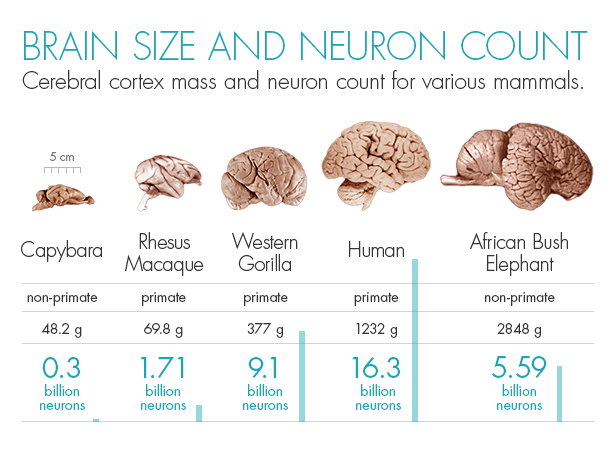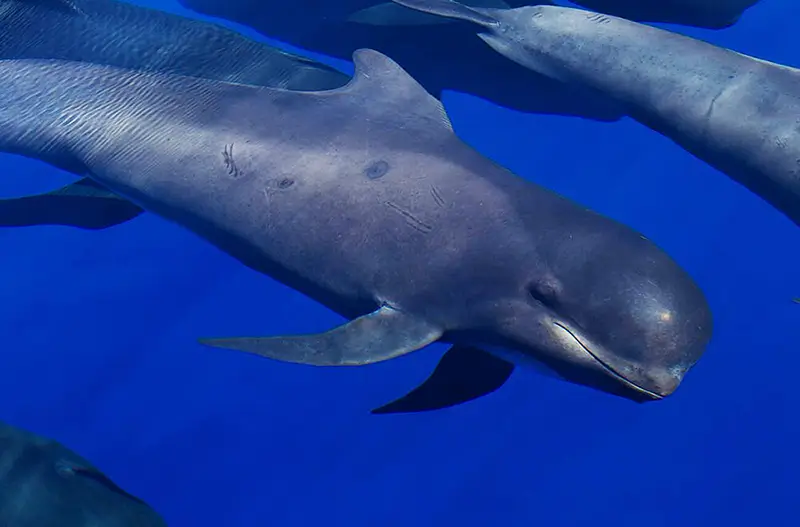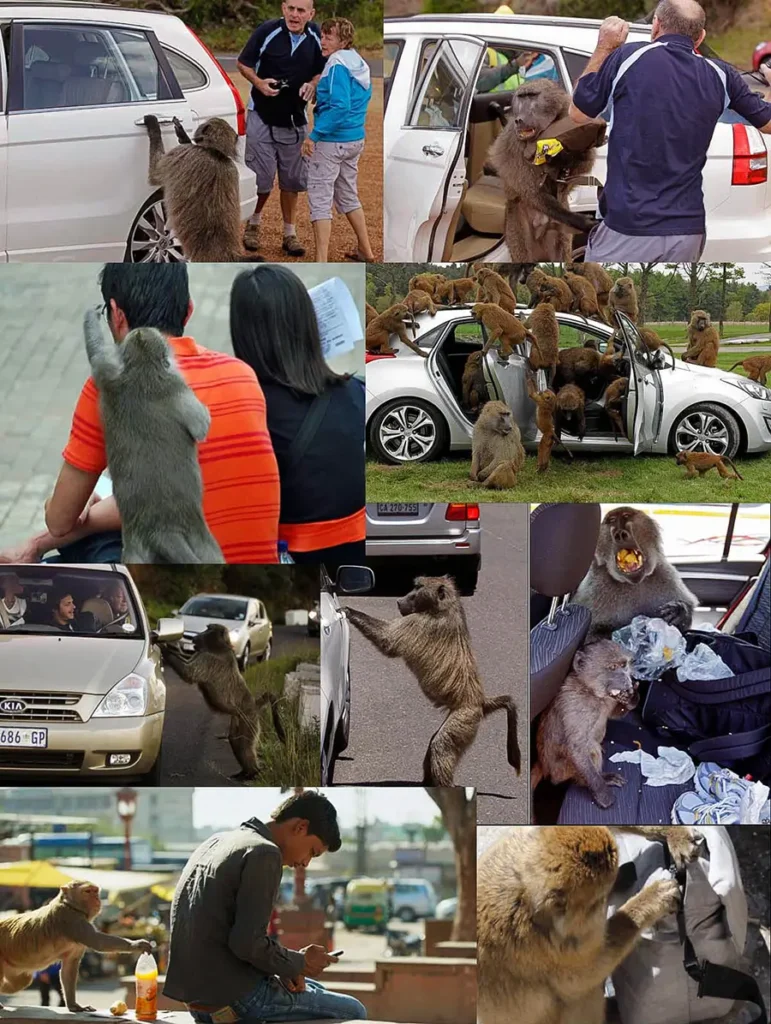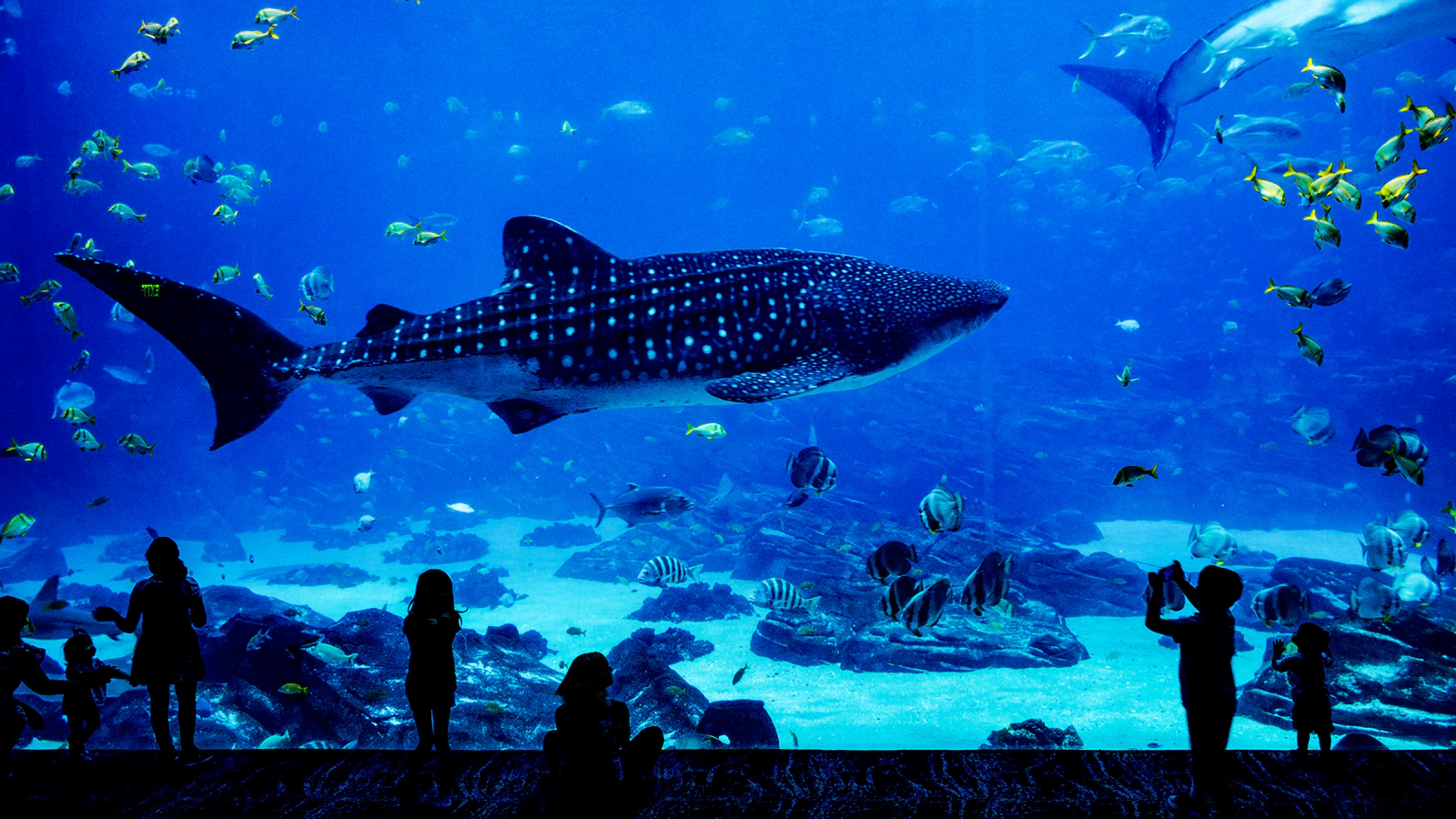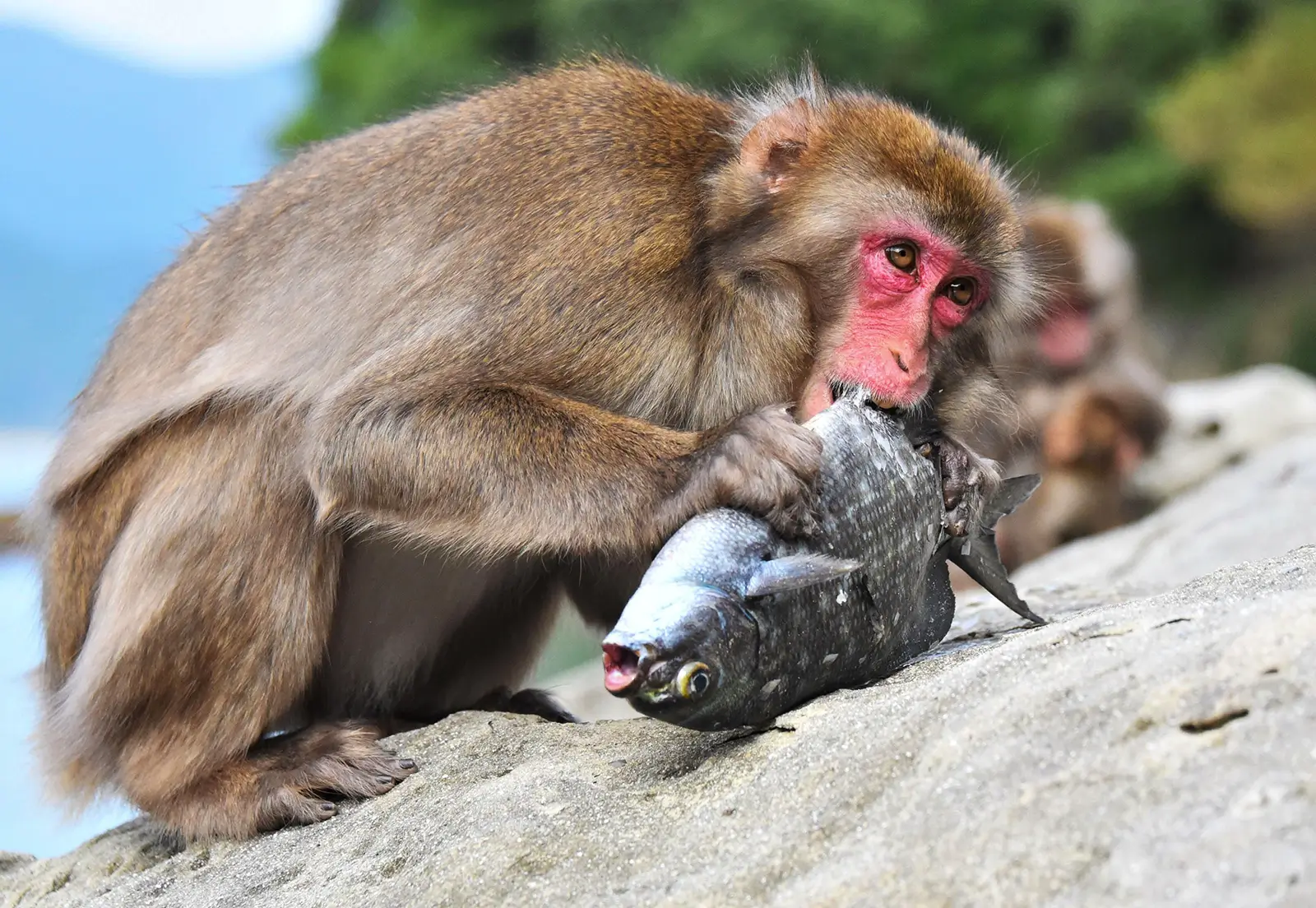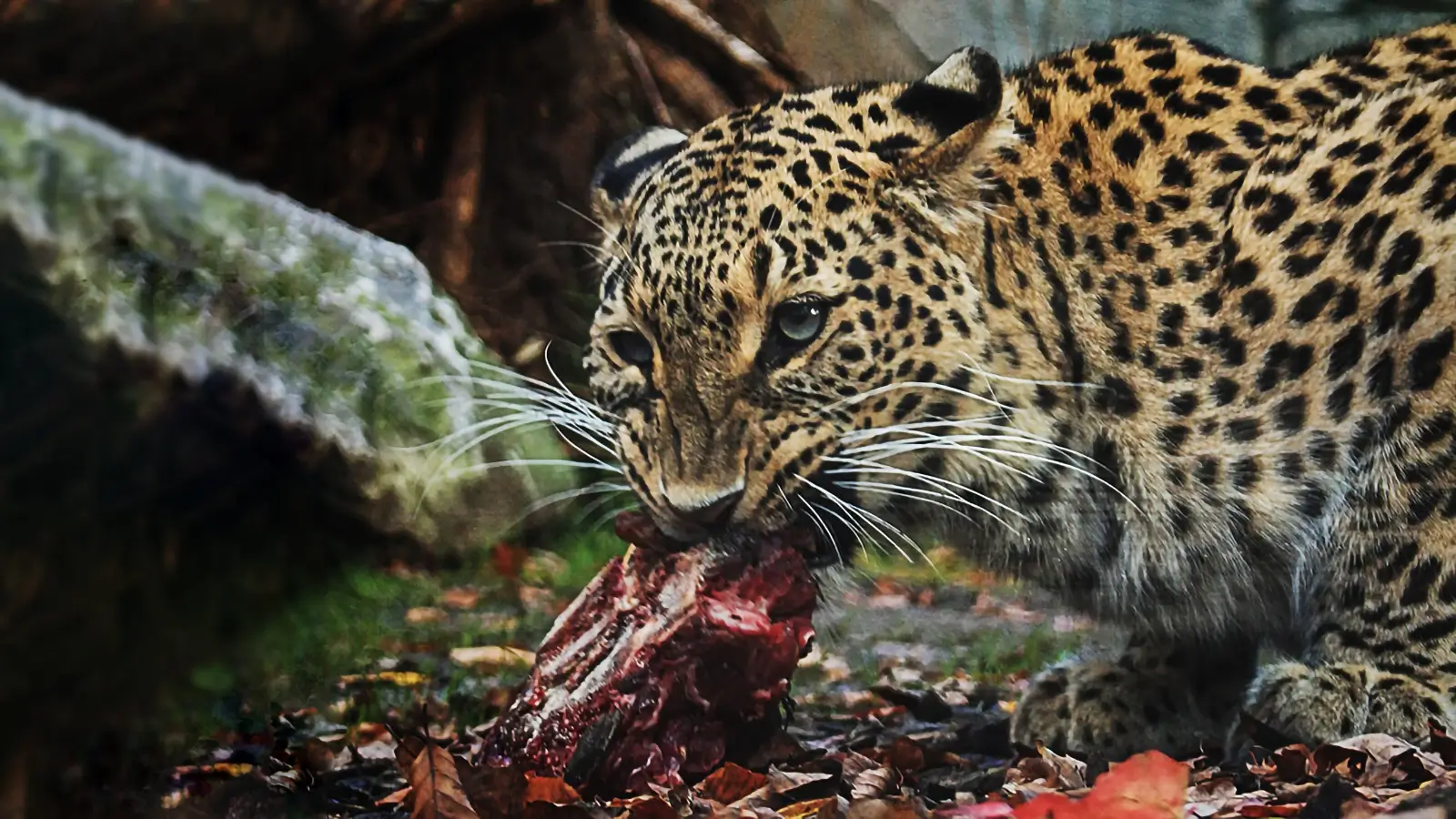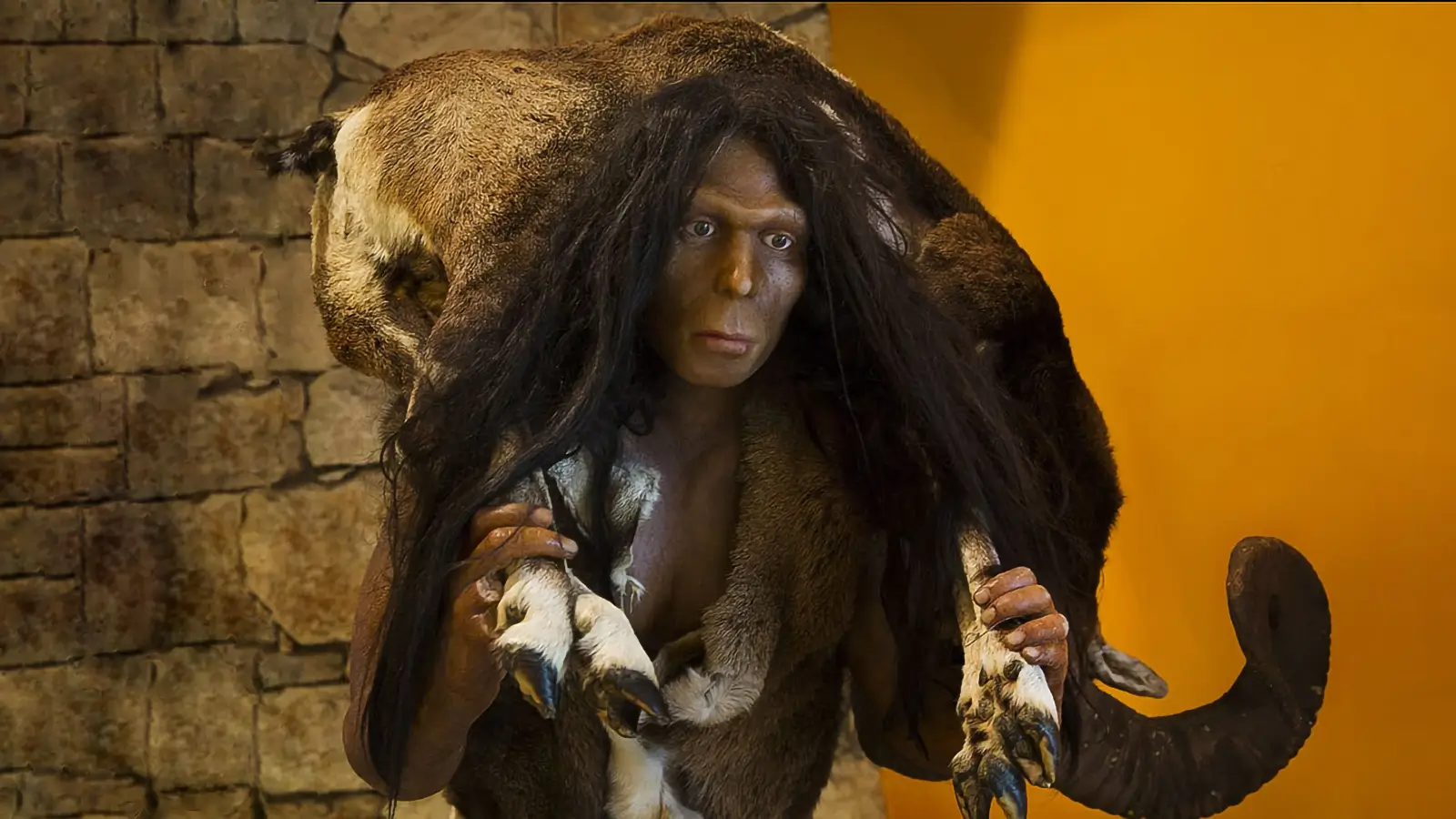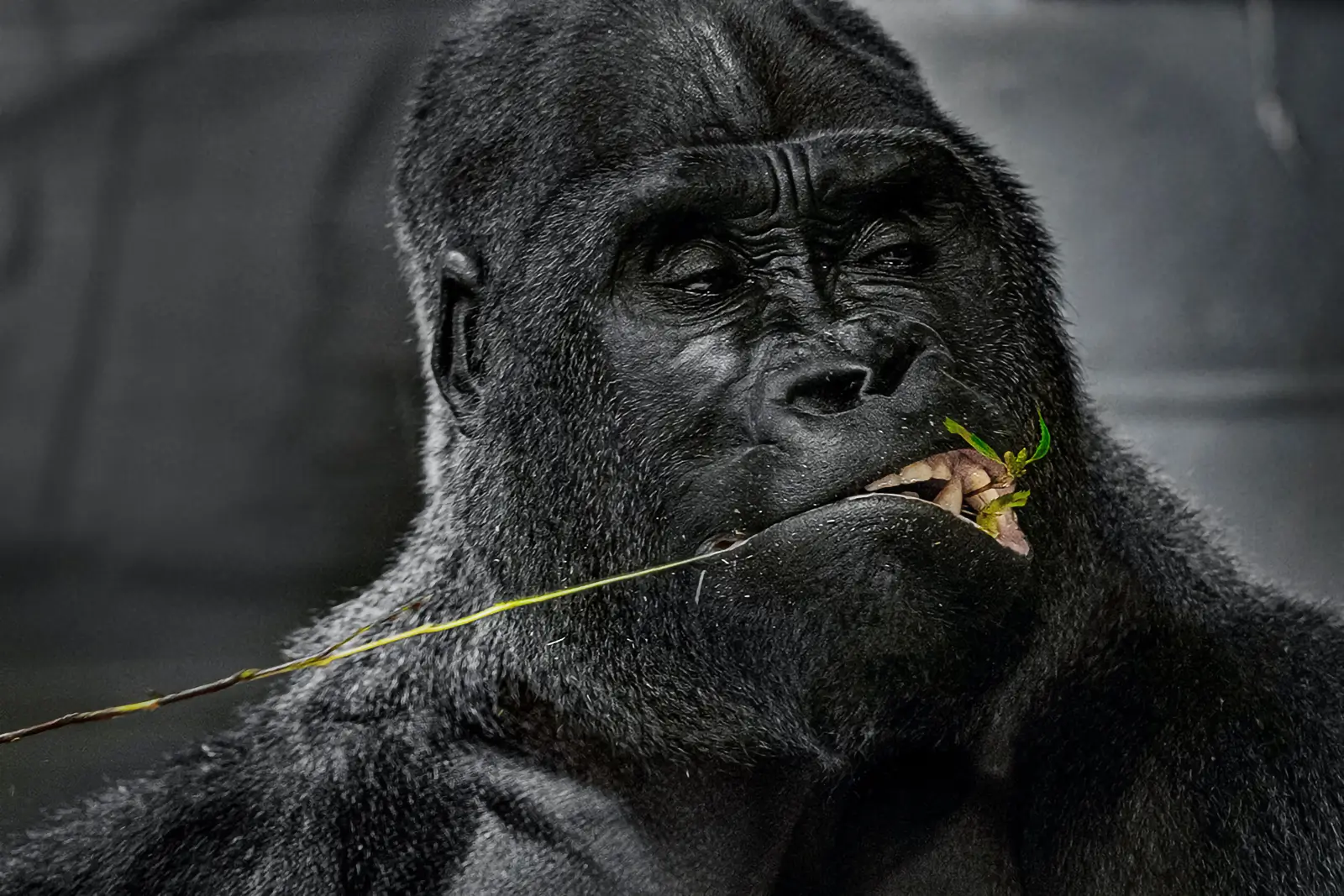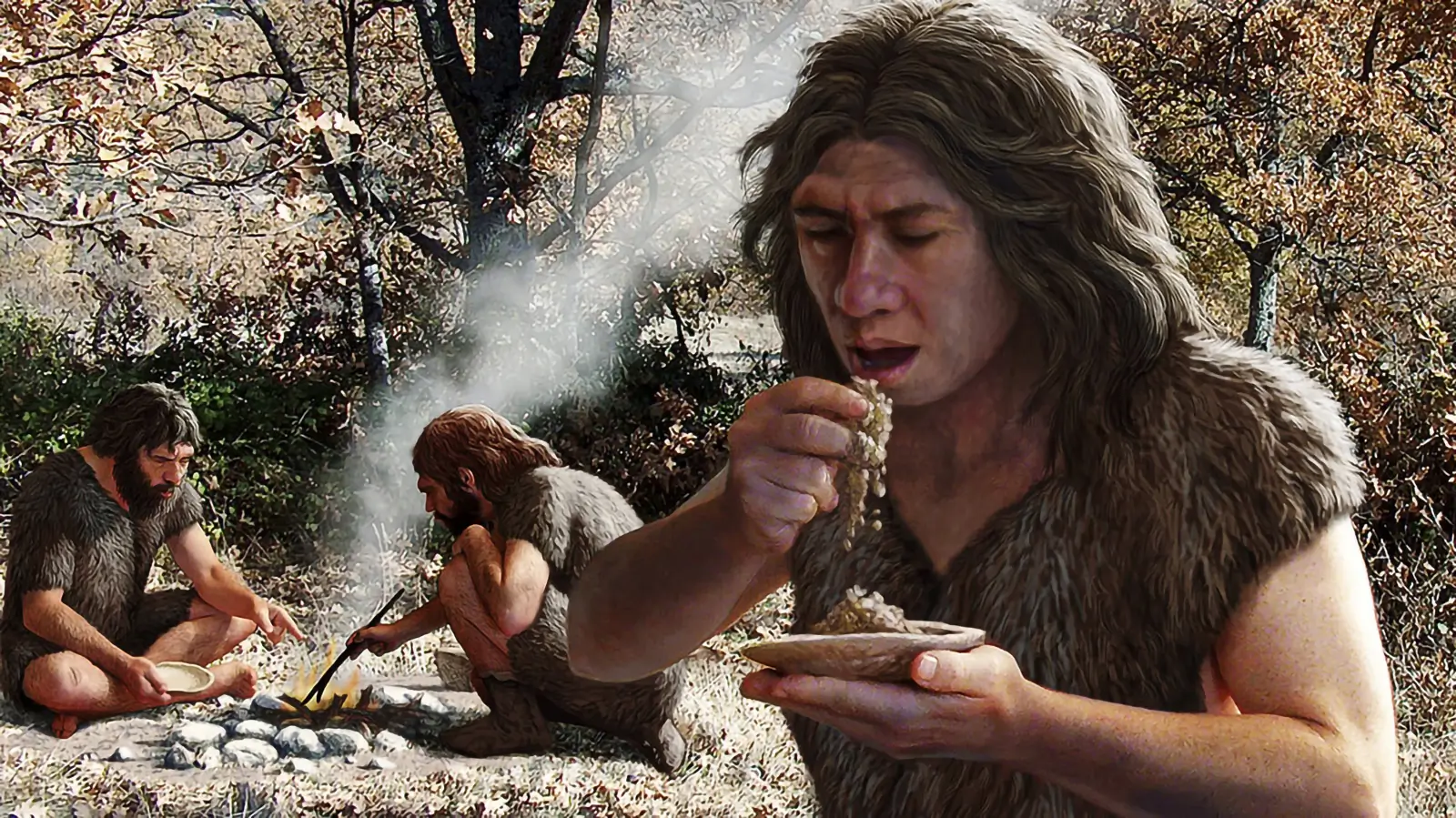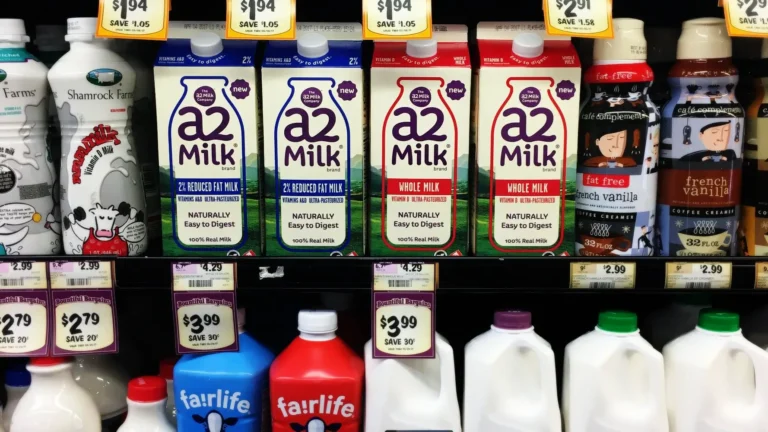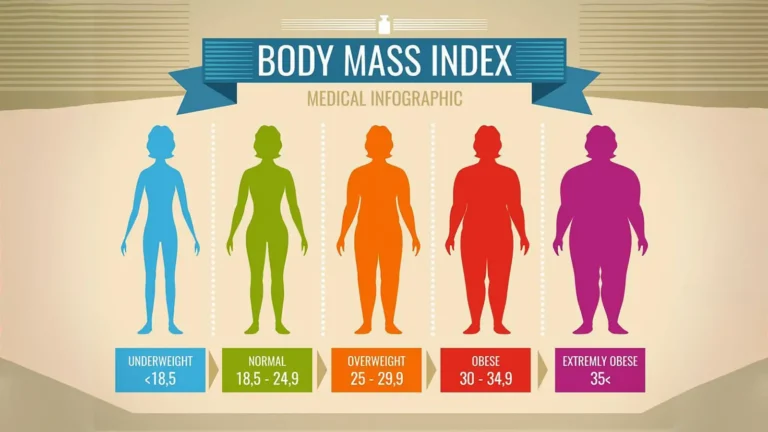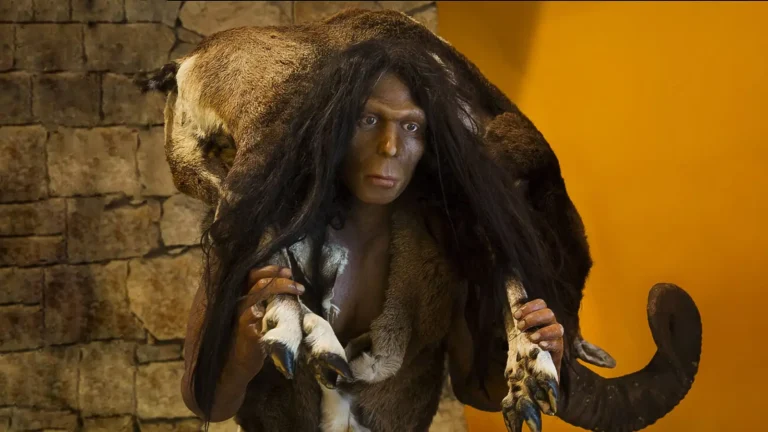Viande Humaine ou Mythe Humain ?- La Cognition Animale
Nous ne sommes pas les espèces les plus intelligentes si nous mesurons scientifiquement la cognition animale. La partie cérébrale néocorticale du globicéphale noir contient plus de neurones que le nôtre.
Milos Pokimica
Écrit par : Milos Pokimica
Examiné Médicalement Par : Dr. Xiùying Wáng, M.D.
Mis à jour le 9 juin 2023Avez-vous déjà pensé à ce que pense votre chien ? Ou comment les dauphins apprennent à coopérer pour attraper des poissons ? Ou si un chimpanzé peut comprendre le langage des signes ? Le domaine scientifique qui étudie les capacités mentales des animaux s'appelle la cognition animale, c'est-à-dire l'étude de l'esprit des animaux, en particulier la manière dont ils pensent et apprennent. Il s'agit d'étudier non seulement ce que font les animaux, mais aussi les processus mentaux qui sous-tendent leur comportement.
La cognition animale est un sujet compliqué. Jusque dans les années 1960, le terme cognition animale était considéré comme un oxymore parce que les animaux étaient considérés comme des systèmes simples qui répondaient simplement à divers stimuli de manière évolutive préprogrammée et invariante. Cependant, lorsque les chercheurs ont commencé à observer de près les animaux en laboratoire et dans la nature, ils se sont rendu compte que cette vision simpliste ne permettait pas d'expliquer les modèles de comportement observés. Bien qu'il existe autant de définitions de la cognition animale qu'il y a de chercheurs, la plupart des scientifiques s'accordent à dire que la cognition animale, comme sa contrepartie humaine, implique essentiellement le traitement de l'information: comment un sujet, au sein du système perceptif spécifique à son espèce (auditif, visuel, olfactif, gustatif, somatosensoriel), reçoit des données du monde qu'il habite (y compris des données provenant d'autres individus), et utilise son cerveau pour procréer en utilisant la neurobiologie spécifique à son espèce. Au cours des dernières décennies, l'étude de la cognition animale s'est élargie pour inclure une gamme étonnamment variée d'espèces, des insectes à nos plus proches parents, en passant par les primates non humains, ainsi qu'un large éventail de techniques.
The field can be subdivided into several subtopics. Researchers who specialize in comparative psychology, for example, examine a specific type of cognition, such as numerical competence, across various species, whereas researchers who specialize in cognitive ethology look at how a particular species’ evolutionary traits allow it to interact in various ways with one or more aspects of its environment. Because all studies involve various aspects of attention, categorization, memory, reasoning, and problem-solving, most researchers conduct studies that overlap a number of different subtopics, and sometimes answers to scientific questions can only be found by combining laboratory and field research. In every case, scientists conduct carefully controlled experiments or well-planned observational studies.
Aujourd'hui, nous disposons d'une série d'études, mais dans un passé pas si lointain, le terme même de cognition animale était nié au point que même les comportements de type humain chez les primates étaient considérés comme des déclenchements instinctifs dépourvus d'intelligence. L'homme était la seule espèce intelligente, la seule espèce de la planète Terre à avoir une âme, et Dieu a créé son image en lui, l'homme est là pour régner et tous les animaux, quel que soit leur niveau d'intelligence, ne sont là que pour servir de source de nourriture. Cette opinion prévaut encore dans la plupart des populations et l'un des mythes qui subsiste est que tout cela est dû au fait que nous avons, d'une manière ou d'une autre, développé un plus grand cerveau à l'âge de pierre, lorsque nous avons commencé à manger de la viande comme source supplémentaire de protéines et d'énergie, ce qui a permis à notre cerveau de se développer.
Le problème de cette croyance est qu'il n'y a pas de relation particulière entre la taille du cerveau et l'intelligence, et que même s'il existe une histoire de la cognition animale, il ne s'agit pas en réalité d'une histoire de la viande. consommation ou la consommation humaine de viande. C'est plus compliqué que ça.
Human adults have around 3 pounds of brain weight, dolphins have 3.5 pounds, an elephant is around 10.5, and sperm whales are around 17.2 pounds. Predators as a general rule tend to have a relatively larger brain than the animals they prey upon. Placental mammals also tend to have larger brains than marsupials such as the opossum. There is a formula known as the encephalization quotient for measuring the species’ brain size related to expectations based on its expected body size. Throughout the entire evolution of Homo sapiens, the prevailing trait was a steady increase in brain size. It is the truth that much of that size can be attributed to the corresponding increases in body size. Neanderthals, for instance, and many people do not know this used to have larger brains than modern Homo sapiens. What is more important than just the size is how the brain is wired and neuron count.
What is unique about the human brain is that the neuron count in one specific part of the brain called the cerebral cortex is much higher than in any other animal on the Earth. The human brain has 86 billion neurons if we count them all; 69 billion in the cerebellum; 16 billion in the cerebral cortex and 1 billion in the brain stem and its extensions into the core of the brain. The cerebellum orchestrates essential bodily functions and movement and is a primitive part of the brain, or let’s say an essential part. The cerebral cortex is the brain’s thick corona, the real deal. It is responsible for self-awareness, language, problem-solving, sophisticated mental talents, and abstract thought. If we want to measure the intelligence of the species, then we need to count neurons in the cerebral cortex. That is it. It is that simple. For example, the elephant brain is three times the size of our own and has 251 billion neurons in its cerebellum, which is needed to manage its massive trunk, but only 5.6 billion in its cortex. Also to be clear an elephant is considered to be a highly intelligent species. If we look at the great apes, we are the winner. We have 16 billion neurons in our cortex, but I only was referring to great apes. Homo sapiens appear to have the most significant number of cortical neurons of all species on Earth.
Oh, attendez. J'ai juste menti. Nous ne sommes pas les plus intelligents. Le globicéphale à longues nageoires l'est. Sa partie cérébrale néocorticale contient beaucoup plus de neurones et de cellules gliales que le néocortex d'autres espèces à gros cerveau, y compris les humains (Mortensen et al., 2014).
Nous sommes l'espèce la plus intelligente si nous ne comptons que les espèces animales terrestres, et nous avons des bras, des jambes et la parole pour pouvoir construire des technologies, mais devinez quoi, d'après ces mesures, nous ne sommes pas l'espèce la plus intelligente de la planète. C'est le globicéphale noir qui l'est.
The highest number of neurons in the cerebral cortex is what makes species intelligent. Primates evolved a way to pack far more neurons into that area than other mammals did. The great apes are tiny compared to elephants and whales, yet their cortices are far denser. Orangutans and gorillas have 9 billion cortical neurons, and chimps have 6 billion. So by these measures, humans are 44% more intelligent than orangutans for example because we have 16 billion neurons and they have 9. So if the average IQ in humans is 100, the IQ of orangutans would be 56. Chimpanzees fall within the 35-50 range usually. Not bad at all. Even the small monkeys are very intelligent and more intelligent than their counterpart in size. When we need to think every time we need to eat, it forces the brain to develop foraging strategies. Let me give an example. In places like South Africa or India, there are a large number of urban monkeys. These wild animals came by their own will to the cities in search of food. In their view, we are just another monkey species. They are not afraid of us at all. They consider us to be non-frightening because we are slower than them and to no small extent weaker, and we have all those food laying around everywhere. For wild monkeys, it is easier to forage for food in the human environment. Stray dogs do it by sniffing food out, they use their noses, but monkeys use their brains to do the same. Because of the movies and culture average, North American is likely to think that monkeys are sweet and cute animals with whom they can have fun and are super cute when wearing human clothes. In real life, they are everything except cute. For example, they are known to roam neighborhoods in gangs. Baboon gangs run wild in parts of the world like Suburban South Africa. They travel in a flock of around 30, and all of them move following the leader but are so vast apart that it is difficult to stop them from sliding into built-up areas. They can cross walls and roofs at speed. Gangs always have a leader, and they go foraging for your stuff. Breaking and entering, aggressive behavior, and stealing. Regular thug life and it is not funny at all. They break into people’s houses to steal food, and break into cars, and they know how to open the doors or anything else in that manner. If they see you do it, they can do it too. They are very intelligent.
Let’s think about this. Small brain monkeys can see you use technology and then they can start to use it also for themselves. They learn by themselves how to open windows, how to open doors of cars and fridges and apartments, they can sneak behind your back and steal, and they can unzip zippers and so on.
Ils ne sont pas seulement conscients d'eux-mêmes, ils sont conscients de votre façon de penser pour pouvoir se mettre à votre place et prédire comment vous allez réagir afin de pouvoir vous manipuler. Je ne plaisante pas. Ils sont connus pour se faufiler derrière votre dos et voler des choses, et ils sont connus pour vous attirer à l'extérieur.
L'un d'eux volera devant vous et commencera à courir et lorsque vous sortirez pour le chasser, d'autres singes que vous n'avez pas vus entreront et voleront des trucs pendant que vous poursuivez cet unique. Ce n'est pas une cognition animale, c'est une cognition à part entière. Et si cela ne suffit pas, ils vont simplement vous le retirer physiquement. Si vous avez un problème avec cela, alors ils vont vous gifler en plein visage. Ils n'ont pas peur de nous. Et nous pouvons dire que c'est déjà assez grave, mais il y a plus. Quand ils s'ennuient, ils vont juste traîner avec les gens et se faire plaisir. L'adjoint au maire de New Delhi est mort d'une attaque de singe. Pas directement, ils ne l'ont pas attaqué, mais il a trébuché de son balcon en essayant de les repousser depuis son appartement. Ils sont agressifs et ils sont intelligents. Selon une étude (Grainger et al., 2012), les babouins n'ont pas de langue connue ou quelque chose de similaire, mais ont pu séparer avec précision les vrais mots anglais des séquences de lettres absurdes. Si les babouins ont la capacité physique de parler, leur niveau de cognition animale est tel qu'ils auront un vrai langage écrit car ils ont une intelligence adéquate pour cela car la capacité à distinguer les mots réels des mots non réels est la première étape de la lecture processus.
Let’s compare for example species of herbivorous monkeys with carnivorous species of the approximately same size. In the documentary “Animals Like Us” filmmakers documented the kidnapping of wild dog puppies by baboons and raising them in their own baboon tribe as members or pets. Baboons and dogs have similar sizes. The clip of the series which was filmed in a garbage dump near Ta’if, Saudi Arabia, shows a male baboon dragging a puppy away from its den as it screams for its mother. Stolen dogs grow up with the baboon species, like a family member or a member of a group. They were eating with them, sleeping, and moving together. The baboons will groom and play with them, and that is important. Baboons only play with family members. The relationship seems to benefit both the dog and the baboon. Domesticated feral dogs do the same job that they have in human society, and that is to guard the territory. They keep wild dog packs away from monkeys at night while they sleep and in return, they are treated with love and care just like humans would a family pet. Note that in this situation it is important to understand that dogs had more of an equal status in the tribe, they were not pets as monkeys did not feed them. Dogs are carnivores and would eat dump rats and other small animals and meat that they can find. They would not eat fruits and vegetables and other grains and other food in the dump yard of plant origins that baboons would eat. There was no direct competition for food thus they have a common tribe in a symbiotic relationship. Now, this video made a lot of controversies. People have a hard time accepting human-like behavior in animals because of our self-image. Was there an actual familiar bond happening between the baboons and dogs, again, we will not know until there’s real and scientific research done. There is one more video featuring a baboon manhandling a puppy that popped up. A Cornell student named Luke Seitz filmed it. He was on a bird research trip in Ethiopia when he recorded a similar situation of a baboon carrying a dog around “like a pet.” He also seemingly observed this behavior over a period of days, so it was not just a fluke.
Dans un autre cas, sur le plateau de Guassa, en Éthiopie, le primatologue Vivek Venkataraman a observé une scène remarquable : des loups et des singes qui se côtoyaient en toute décontraction. En temps normal, les singes sont des proies, mais dans cette situation, les loups ne semblaient pas vouloir manger des babouins. Les babouins, et surtout les jeunes, sont des proies faciles pour les loups. En fait, ils semblaient faire tout ce qu'ils pouvaient pour éviter toute confrontation. Ils s'ignoraient et passaient des heures à se promener dans les grands troupeaux de geladas à la recherche de rongeurs. Comme ils ne sont pas en compétition pour une source de nourriture primaire et que l'attaque de la grande colonie de singes entraînerait une guerre et de mauvaises choses pour chacun d'entre eux, ils cohabitent. Les humains et les chats sauvages avaient ce type d'arrangement. La domestication des chats sauvages s'est produite à la même époque au Moyen-Orient et en Égypte. Les chats sauvages ont commencé à passer beaucoup de temps dans les villages humains. De nombreux rats étaient présents en raison de l'accumulation des réserves de céréales après la domestication des plantes sauvages. Il s'agissait de la même relation symbiotique. Nous avons utilisé les chats sauvages pour réduire le nombre de rats ; il était bénéfique pour nous de les tolérer. Nous ne les avons pas nourris directement. De plus, les rats peuvent attirer d'autres prédateurs comme les serpents, ce qui peut être mortel. Nous avons donc toléré les chats sauvages, et les chats sauvages nous ont tolérés parce que nous sommes la source de leur nouvelle abondance de nourriture et, avec le temps, la domestication s'est produite. Les singes sont également connus pour adopter les gens.
Marina Chapman a été enlevée alors qu'elle n'avait que cinq ans. L'une des raisons possibles était de demander une rançon, mais comme les criminels n'ont rien obtenu, ils l'ont simplement abandonnée dans la jungle colombienne. Pendant les cinq années de son enfance, elle a vécu dans la nature. Elle raconte qu'elle a été recueillie par un groupe de singes capucins. Ces singes sont connus pour accepter les jeunes enfants dans leur milieu. Elle a appris à chercher de la nourriture en les imitant. Elle dit que ce sont les singes qui lui ont appris à le faire, mais en tout cas, elle a survécu. Elle est revenue à la civilisation humaine lorsqu'elle a été ramassée par des chasseurs et vendue à un bordel (à ce moment-là, elle n'était pas capable de parler la langue humaine). Elle a finalement réussi à s'échapper de la maison close, a vécu dans la rue et est finalement devenue l'esclave d'une famille mafieuse.
La viande humaine est un mythe juste humain. Qu'il s'agisse de poulets, de porcs ou de tout autre animal, les porcs sont au moins aussi intelligents qu'un enfant humain de trois ans. Les cochons sont au moins aussi intelligents qu'un enfant humain de trois ans, les vaches développent des liens profonds et durables avec leur famille et leurs amis, les poulets sont capables de distinguer plus de 100 visages différents des membres de leur espèce et disposent de 30 cris différents pour signaler des frets différents. La cognition animale est un vaste sujet.
De Kanzi le bonobo à Akeakamai le dauphin. Kenzi, par exemple, a appris plus de 500 lexigrammes. Plus important encore, il a été capable de relier ces lexigrammes pour représenter la forme de petites phrases. Lors d'une étude réalisée en 1993, il a obtenu de meilleurs résultats qu'un enfant humain de 2 ans pour ce qui est de répondre à des demandes verbales.
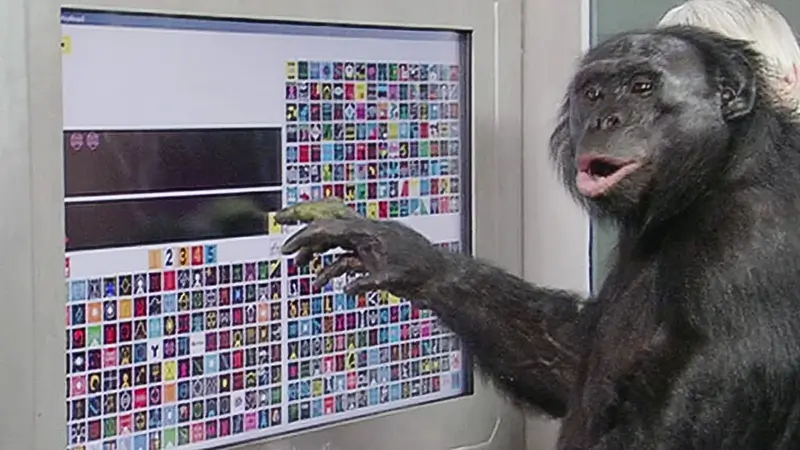
Akeakamai et Phoenix (Wikipédia), son compagnon de bassin, ont appris à reconnaître les mots. Akeakamai a appris des mots représentés par différents gestes effectués par les mains d'un dresseur humain. Phoenix a appris à reconnaître des mots en écoutant des sons électroniques générés par ordinateur. Ces sons étaient reproduits par un haut-parleur sous-marin. Les deux dauphins ont réussi à apprendre des mots individuels, puis des chaînes de mots ou des phrases. De manière impressionnante, les dauphins pouvaient comprendre les instructions données avec différentes structures grammaticales et différents ordres de mots. Ils comprenaient la différence entre des instructions telles que "Amenez le cerceau au ballon" et "Amenez le ballon au cerceau". En exécutant correctement les actions demandées, les dauphins ont montré qu'ils comprenaient les éléments de la langue. Il s'agit là d'une intelligence du même niveau que celle des humains. Plus remarquable encore, les dauphins semblaient capables de collaborer de manière créative. Les responsables humains ont demandé aux dauphins d'inventer ensemble leurs propres tours, en utilisant le tandem et en créant des commandes. Les dauphins répondaient en adoptant le comportement synchronisé de leur choix, par exemple en plongeant vers l'arrière ou en tortillant leur queue. Les militaires du monde entier ont même entraîné et expérimenté avec des dauphins dans l'idée d'en faire des soldats. Les dauphins se situent à un niveau de cognition très proche de celui des humains. Cependant, ce fait n'est pas pertinent pour nous.
La cognition n'a rien à voir avec ça
Nous ne sommes pas la seule espèce intelligente et si l'on regarde les babouins et les chiens, l'un herbivore, l'autre carnivore, les babouins sont de loin plus intelligents. De plus, le chien lui-même est un animal très intelligent. Un grand dogme scientifique veut que, d'une manière ou d'une autre, la source de viande nouvellement incorporée, égale à quelques pour cent du total des calories consommées sous forme de moelle osseuse dans le régime alimentaire des premiers homininés, ait développé notre gros cerveau et que la viande soit essentielle à notre intelligence et doive faire partie intégrante du régime alimentaire moderne.
En même temps, nous ne voulons reconnaître aucune forme de cognition animale. La cognition animale est un sujet qui deviendra de plus en plus important au fur et à mesure que les progrès des neurosciences se poursuivront. La cognition animale est aujourd'hui à un niveau de compréhension scientifique tel que l'anthropomorphisme n'est plus un terme dogmatique et que les scientifiques rejettent aujourd'hui ce type de langage. Aujourd'hui, les scientifiques impliqués dans le domaine de la cognition animale pensent que tous les animaux éprouvent des émotions, par exemple. Non seulement cela, mais les émotions sont vitales pour leur survie. À l'avenir, la cognition animale jouera également un rôle dans nos propres perceptions et nous devrons répondre à certaines questions spécifiques.
Accorderons-nous des droits humains à certaines espèces animales ? Si nous le faisons, quelles en seront les conséquences ? Jusqu'où la cognition animale doit-elle aller avant que nous considérions un animal comme un candidat aux droits de l'homme ? Considérerions-nous le meurtre d'un corbeau comme celui d'un enfant humain de 7 ans et, dans la négative, pourquoi ? Arrêterions-nous les expériences sur les primates ? Les Japonais cesseraient-ils de tuer et de manger de la viande de dauphin? Allons-nous mettre en prison les personnes qui torturent et tuent des animaux ? Qu'en est-il des espèces animales que nous considérons comme des sources de nourriture ?
Références :
- Mortensen, HS, Pakkenberg, B., Dam, M., Dietz, R., Sonne, C., Mikkelsen, B. et Eriksen, N. (2014). Relations quantitatives dans le néocortex des delphinides. Frontières en neuroanatomie, 8, 132. https://doi.org/10.3389/fnana.2014.00132
- Grainger, J., Dufau, S., Montant, M., Ziegler, JC et Fagot, J. (2012). Traitement orthographique chez les babouins (Papio papio). Science (New York, N.Y.), 336(6078), 245-248. https://doi.org/10.1126/science.1218152
Articles Similaires
Vous avez des questions sur la nutrition et la santé ?
J'aimerais avoir de vos nouvelles et y répondre dans mon prochain post. J'apprécie votre contribution et votre opinion et j'ai hâte d'avoir de vos nouvelles bientôt. Je vous invite également à nous suivre sur Facebook, Instagram et Pinterest pour plus de contenu sur l'alimentation, la nutrition et la santé. Vous pouvez y laisser un commentaire et entrer en contact avec d'autres passionnés de santé, partager vos conseils et expériences, et obtenir le soutien et les encouragements de notre équipe et de notre communauté.
J'espère que ce billet a été instructif et agréable pour vous et que vous êtes prêt à mettre en pratique les connaissances que vous avez acquises. Si vous avez trouvé ce billet utile, veuillez le partager à vos amis et à votre famille qui pourraient également en bénéficier. On ne sait jamais qui peut avoir besoin de conseils et de soutien dans son parcours de santé.
– Vous pourriez aussi aimer –

Apprendre la Nutrition
Milos Pokimica est docteur en médecine naturelle, nutritionniste clinique, rédacteur en santé médicale et nutrition et conseiller en sciences nutritionnelles. Auteur de la série de livres Devenir vegetarien ? Examen des sciences, il exploite également le site Web de santé naturelle GoVeganWay.com
Avis de non-responsabilité médicale
GoVeganWay.com vous propose des critiques des dernières recherches liées à la nutrition et à la santé. Les informations fournies représentent l'opinion personnelle de l'auteur et ne sont pas destinées ni implicitement à remplacer un avis médical professionnel, un diagnostic ou un traitement. Les informations fournies sont fournies à titre informatif uniquement et ne sont pas destinées à remplacer la consultation, le diagnostic et/ou le traitement médical d'un médecin ou d'un prestataire de soins de santé qualifié.NE JAMAIS IGNORER LES CONSEILS MÉDICAUX PROFESSIONNELS OU RETARDER LA RECHERCHE DE SOINS MÉDICAUX EN RAISON DE QUELQUE CHOSE QUE VOUS AVEZ LU OU ACCÉDÉ SUR GoVeganWay.com
N'APPLIQUEZ JAMAIS DE CHANGEMENTS AU STYLE DE VIE OU TOUT CHANGEMENT À LA SUITE DE QUELQUE CHOSE QUE VOUS AVEZ LU SUR GoVeganWay.com AVANT DE CONSULTER UN PRATICIEN MÉDICAL AGRÉÉ.
En cas d'urgence médicale, appelez immédiatement un médecin ou le 911. GoVeganWay.com ne recommande ni n'approuve aucun groupe, organisation, test, médecin, produit, procédure, opinion ou autre information spécifique pouvant être mentionné à l'intérieur.
Choix de l'éditeur -
Milos Pokimica est docteur en médecine naturelle, nutritionniste clinique, rédacteur en santé médicale et nutrition et conseiller en sciences nutritionnelles. Auteur de la série de livres Devenir vegetarien ? Examen des sciences, il exploite également le site Web de santé naturelle GoVeganWay.com
Derniers articles –
Nouvelles Basées Sur Les Plantes
-
Where Do Vegans Get Their Protein? The Ultimate 2025 Response
on juin 29, 2025
-
Saffron Green Bean Rice
on juin 29, 2025
-
Tomato Choka Salad With Chickpea Tofu
on juin 29, 2025
-
How To Make This ‘Always A Winner’ Vegan Sandwich
on juin 29, 2025
-
5-Ingredient Coconut And Squash Traybake
on juin 29, 2025
-
Lidl Launches Round BN-Style Vegan Biscuits
on juin 28, 2025
-
Vegan Mushroom Calzone
on juin 28, 2025
Top Des Nouvelles Sur la Santé - ScienceDaily
- A tiny implant just helped paralyzed rats walk again—is human recovery next?on juin 28, 2025
A groundbreaking study from the University of Auckland and Chalmers University of Technology is offering new hope for spinal cord injury patients. Researchers have developed an ultra-thin implant that delivers gentle electric currents directly to the injured spinal cord. This device mimics natural developmental signals to stimulate nerve healing, and in animal trials, it restored movement and touch sensation in rats—without causing inflammation or damage.
- Scientists turn beer yeast into mini factories for smart drugson juin 28, 2025
A team of researchers has turned ordinary yeast into tiny, glowing drug factories, creating and testing billions of peptide-based compounds in record time. This green-tech breakthrough could fast-track safer, more precise medicines and reshape the future of pharma.
- Candy colors, THC inside: How cannabis edibles are tricking teen brainson juin 28, 2025
Teens are being misled by cannabis edibles dressed up like health foods. Bright colors, fruit imagery, and words like vegan make these products look fun, natural, and safe even when they re not. A WSU study warns that this could increase the risk of underage use and urges new packaging rules based on what actually appeals to teens.
- Why asthma often comes back—even with powerful drugson juin 27, 2025
Biological drugs have been a game-changer for people with severe asthma, helping them breathe easier and live more comfortably. But researchers at Karolinska Institutet have uncovered a surprising twist: while these treatments ease symptoms, they may not fully eliminate the immune cells that drive inflammation. In fact, some of these cells actually increase during treatment, suggesting the medication is managing symptoms without targeting the root cause. This could explain why asthma often […]
- Parkinson’s may begin decades earlier — and your immune system might know firston juin 27, 2025
Misbehaving T cells light up long before Parkinson’s symptoms show, zeroing in on vulnerable brain proteins. Their early surge could double as an alarm bell and a target for stop-it-early treatments.
- AI sees what doctors miss: Fatty liver disease hidden in chest x-rayson juin 27, 2025
Researchers in Japan created an AI that can detect fatty liver disease from ordinary chest X-rays—an unexpected and low-cost method that could transform early diagnosis. The model proved highly accurate and may offer a fast, affordable way to flag this silent but serious condition.
- Acid-busting diet triggers 13-pound weight loss in just 16 weekson juin 26, 2025
Swap steaks for spinach and you might watch the scale plummet. In a 16-week crossover study, overweight adults who ditched animal products for a low-fat vegan menu saw their bodies become less acidic and dropped an average of 13 pounds—while the Mediterranean diet left weight unchanged. Researchers link the shift to lower “dietary acid load,” a hidden inflammation trigger driven by meat, eggs, and cheese.
PubMed, #régime-vegan –
- Micronutrient intake and nutritional status in 16-to-24-year-olds adhering to vegan, lacto-ovo-vegetarian, pescatarian or omnivorous diets in Swedenon juin 26, 2025
CONCLUSION: Youth, regardless of dietary practice, need support to ensure adequate micronutrient intakes, particularly for vitamin D and selenium. Further research is required to evaluate iodine nutrition in Swedish youth.
- Dietary Patterns and Sustainable Lifestyles: A Multicenter Study from Latin America and Spainon juin 26, 2025
Food systems interact through multiple dimensions including food security, nutrition, and planetary health. This study aims to associate different dietary patterns with sustainable lifestyles in Latin America and Spain. This was an observational, analytical, multicenter, cross-sectional survey study, with a total of 6412 participants. A self-administered questionnaire was developed in an online format in the Google Docs interface. The questionnaire was divided into sections: (1) […]
- Integrating comparative genomics and risk classification by assessing virulence, antimicrobial resistance, and plasmid spread in microbial communities with gSpreadCompon juin 26, 2025
CONCLUSIONS: The gSpreadComp workflow aims to facilitate hypothesis generation for targeted experimental validations by the identification of concerning resistant hotspots in complex microbial datasets. Our study raises attention to a more thorough study of the critical role of diet in microbial community dynamics and the spread of AMR. This research underscores the importance of integrating genomic data into public health strategies to combat AMR. The gSpreadComp workflow is available at…
- Validation and adaptation of a Turkish version of the dietarian identity questionnaireon juin 25, 2025
Dietarian identity reflects an individual’s cognitive, emotional, and behavioral orientation toward the consumption or avoidance of animal-based foods, including red meat, poultry, fish, eggs, and dairy. This study aimed to adapt and validate the Dietarian Identity Questionnaire (DIQ) for Turkish-speaking populations by establishing its cultural and linguistic suitability and examining dietarian identity profiles among different dietary patterns. The DIQ was adapted into Turkish and […]
- Planting Rights and Feeding Freedom: Navigating the Right to a Vegan Diet in Hospitals and Prisonson juin 20, 2025
The legal recognition of veganism highlights the evolving landscape of dietary choices and their status under human rights law. This paper examines the legal status of vegan diets under the European Convention on Human Rights (ECHR), focusing on public institutions such as prisons and hospitals. By analyzing the first relevant cases before the European Court of Human Rights, it explores the protection of vegan diets under Articles 9 (freedom of thought, conscience, and religion) and 14…
Messages aléatoires –
Postes en vedette -

Dernières Nouvelles de PubMed, #alimentation végétale –
- Adherence to Mediterranean Diet and Implications for Cardiovascular Risk Preventionby Giulia Frank on juin 27, 2025
Background/Objectives:Arterial hypertension, increased carotid intima-media thickness (cIMT), and arterial stiffness (AS) are recognized predictors of cardiovascular disease (CVD). Emerging evidence suggests that vascular remodeling may precede the full development of hypertension. Furthermore, body mass index (BMI), fat mass percentage (FM%), and visceral adipose tissue (VAT), are significant risk factors for cardiovascular events. Conversely, adherence to the Mediterranean diet is […]
- Fermented Fruits, Vegetables, and Legumes in Metabolic Syndrome: From Traditional Use to Functional Foods and Medical Applicationsby Karolina Bernacka on juin 27, 2025
Fermentation has been used for centuries to preserve food and to obtain products with new, attractive sensory characteristics. Fermented products are a source of dietary fiber, vitamins, bioactive compounds, and probiotic bacteria with health-promoting properties. This review provides a comprehensive overview of the effects of fermented fruits, vegetables, and legumes on metabolic disturbances characterizing metabolic syndrome (MetS). Furthermore, the chemical composition, microbial […]
- Dos and Don’ts in Kidney Nutrition: Practical Considerations of a Panel of Experts on Protein Restriction and Plant-Based Diets for Patients Living with Chronic Kidney Diseaseby Massimo Torreggiani on juin 27, 2025
Dietary management is a pillar of chronic kidney disease (CKD) treatment. While some rules are the same as dietary prescriptions for the general population and those suffering from other chronic diseases (energy intake, salt intake, avoidance of ultra-processed food and limited intake of animal fats), in non-dialysis-dependent patients living with CKD, the specific focus is on protein intake. Low-protein diets (LPDs) and supplemented very low protein diets (sVLPDs) have been successfully…
- Effects of Pork Protein Ingestion Prior to and Following Performing the Army Combat Fitness Test on Markers of Catabolism, Inflammation, and Recoveryby Drew E Gonzalez on juin 27, 2025
Tactical athletes and military personnel engaged in intense exercise need to consume enough quality protein in their diet to maintain protein balance and promote recovery. Plant-based protein sources contain fewer essential amino acids (EAAs), while pork loin contains a higher concentration of EAAs and creatine than most other animal protein sources. This study aimed to determine whether the ingestion of plant-based or pork-based military-style meals ready-to-eat (MREs) affects recovery from […]
- Mediterranean Diet, Obesity-Related Metabolic Cardiovascular Disorders, and Environmental Sustainability: A Systematic Reviewby Sergio Rodríguez Núñez on juin 27, 2025
INTRODUCTION: This article aims to provide an updated overview of the scientific knowledge regarding the interplay between the Mediterranean diet (MedD), sustainability, and cardiovascular and metabolic health.
- Employing Nutrition to Delay Aging: A Plant-Based Telomere-Friendly Dietary Revolutionby Joanna Polom on juin 27, 2025
Telomere attrition is a hallmark of cellular aging, influenced by oxidative stress, chronic inflammation, and metabolic dysregulation. Emerging evidence suggests that dietary patterns rich in plant-based, minimally processed foods may influence telomere dynamics, potentially extending healthspan. This narrative review synthesizes current literature on the molecular mechanisms by which specific nutrients-such as antioxidants, polyphenols, omega-3 fatty acids, and methyl donors-affect telomere…
